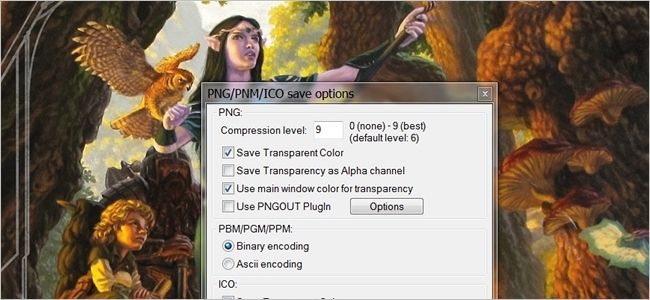The PNG format is supposed to be a lossless format, but when you save an image as a PNG file, you are asked to choose a compression level. Does this mean that the PNG format is actually not lossless after all? Today's SuperUser Q&A post helps clear up the confusion for a curious reader.
Today’s Question & Answer session comes to us courtesy of SuperUser—a subdivision of Stack Exchange, a community-driven grouping of Q&A web sites.
The Question
SuperUser reader pkout wants to know if the quality of a PNG image is affected by the compression level chosen:
As I understand it, PNG files use lossless compression. However, when I am using an image editor such as Gimp and try to save an image as a PNG file, it asks for a compression level ranging between 0 and 9.
If it has a compression parameter that affects the visual precision of the compressed image, how is PNG lossless then? Can someone please explain this to me? Do I get lossless behavior only when I set the compression level to 9?
Is there a difference in the quality of the image depending on the compression level you choose?
The Answer
SuperUser contributors LordNeckbeard and jjlin have the answer for us. First up, LordNeckbeard:
PNG is Compressed, but Lossless
The compression level is a trade-off between file size and encoding/decoding speed. To overly generalize, even non-image formats such as FLAC have similar concepts.
Different Compression Levels, Same Decoded Output
Although the file sizes are different due the the different compression levels, the actual decoded output will be identical. You can compare the MD5 hashes of the decoded outputs with ffmpeg using the MD5 muxer. This is best shown with some examples.
Create PNG Files
- By default, ffmpeg will use -compression_level 100 for PNG output.
- A quick, sloppy test showed that 100 (the highest compression level) took roughly three times longer to encode and five times longer to decode than 0 (the lowest compression level) in this example.
Compare File Size
Decode the PNG Files and Show MD5 Hashes
Since both hashes are the same, you can be assured that the decoded outputs (the uncompressed raw files) are exactly the same.
Followed by the answer from jjlin:
PNG is lossless. GIMP is most likely not using the best choice of wording in this case.
Think of it as quality of compression or level of compression. With lower compression, you get a bigger file, but it takes less time to produce, whereas with higher compression, you get a smaller file that takes longer to produce.
Typically you get diminishing returns, i.e. not as much decrease in size compared to the increase in time it takes when going up to the highest compression levels, but it is up to you.
Have something to add to the explanation? Sound off in the comments. Want to read more answers from other tech-savvy Stack Exchange users? Check out the full discussion thread here.




